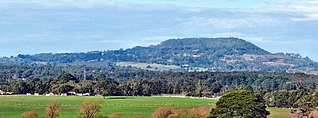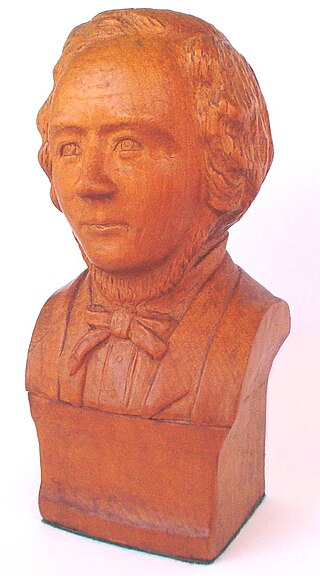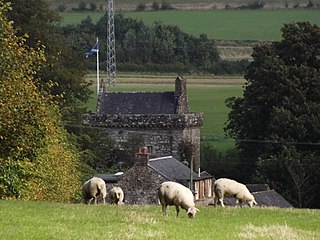
Ballarat is a city in the Central Highlands of Victoria, Australia. At the 2021 census, Ballarat had a population of 111,973, making it the third largest city in Victoria.

The Division of Ballarat is an Australian electoral division in the state of Victoria. The division was proclaimed in 1900, and was one of the original 65 divisions to be contested at the first federal election. It was named for the provincial city of the same name by Scottish squatter Archibald Yuille, who established the first settlement − his sheep run called Ballaarat − in 1837, with the name derived from a local Wathawurrung word for the area, balla arat, thought to mean "resting place".
The Ballarat Cricket Association is a cricket league which runs in Ballarat, Victoria, Australia. The league has different divisions for under-13s, two grades of under-15s, 1 grade under-17s and three 2-day senior grades as well as a one-day competition with 2 grades. The league also has select teams for different competitions, as well as for the 'Country Week' competition against teams such as Maryborough, Grampians, Castlemaine and Bendigo.

Mount Buninyong is an extinct volcano in western Victoria, Australia rising to 745 metres (2,444 ft) AHD. It lies within the Mount Buninyong Scenic Reserve, 4 kilometres (2.5 mi) north of the town of Buninyong and 14 kilometres (8.7 mi) south of Ballarat, on the regional city's rural-urban fringe.

Buninyong is a town 11 km from Ballarat in Victoria, Australia. The town is on the Midland Highway, south of Ballarat on the road to Geelong.

Alfredton is a suburb of Ballarat, Victoria, Australia, west of the CBD. The population at the 2021 census was 11,822 making it the most populated in the Ballarat urban area.
The Wadawurrung nation, also called the Wathaurong, Wathaurung, and Wadda Wurrung, are an Aboriginal Australian people living in the area near Melbourne, Geelong and the Bellarine Peninsula in the state of Victoria. They are part of the Kulin alliance. The Wathaurong language was spoken by 25 clans south of the Werribee River and the Bellarine Peninsula to Streatham. The area they inhabit has been occupied for at least the last 25,000 years.

Thomas Hiscock (1812–1855) was an English blacksmith and prospector who settled in Australia in the 1840s. He is best-remembered today for helping to spark the Victorian Gold Rush with his discovery of gold outside the town of Buninyong, near Ballarat.

Sir Charles Henry Darling was a British colonial governor.

Clan Irvine is a Scottish clan.

Scotsburn is a locality in Victoria, Australia. It is approximately 16 kilometres (9.9 mi) from Ballarat on the Midland Highway toward Geelong. Its local government areas are the Shire of Moorabool and the City of Ballarat.

Mount Pleasant is the oldest residential suburb of Ballarat, Victoria, Australia. It is located on the southern extremity of the city between the Yarrowee Creek and the White Horse Range. Physically it is largely cut off from the rest of Ballarat which contributes to a sense of a suburb apart. The traditional Wathaurung country was first settled in 1836 when the Yuille brothers established a sheep run that included the sheltered corner under the escarpment later named Mount Pleasant. In those days, before there was a town at Ballarat, Buninyong was the nearest township. When the gold rush of 1851 brought thousands of diggers to nearby Golden Point, Mount Pleasant was left alone as no gold was initially found there. Its peacefulness made it attractive to a number of Cornish miners and their families who had come to Australia to settle permanently. These Wesleyans were the founders of the community. As devout and sober church people they sought a place to live away from the drunken mayhem of the diggings around Main Road.

Thomas Livingstone Learmonth of Parkhill was an early settler of Australia, of Scots descent, who established himself as a squatter on land around Ballarat, Victoria, in the 1830s.

During the Australian gold rushes, starting in 1851, significant numbers of workers moved from elsewhere in Australia and overseas to where gold had been discovered. Gold had been found several times before, but the colonial government of New South Wales had suppressed the news out of the fear that it would reduce the workforce and destabilise the economy.

The Yarrowee River is a perennial river of the Corangamite catchment, located in the Central Highlands region of the Australian state of Victoria.

William Irving Winter-Irving, born William Irving Winter was an Australian grazier, magistrate and politician, member of the Victorian Legislative Council.

Bonshaw Tower is an oblong tower house, probably dating from the mid-16th century, one mile south of Kirtlebridge, Dumfries and Galloway, Scotland, above the Kirtle Water. It is adjacent to a 19th-century mansion. The tower was one of a number of structures built along the Scottish border in the 1500s as protection against incursions by the English.

David Mortimer Davies was a politician in colonial Victoria, Australia.
Bonshaw is a locality on the southern rural fringe of the City of Ballarat in Victoria, Australia. At the 2021 census, Bonshaw had a population of 949. This is an increase from a population of 210 at the 2016 census and 188 at the 2011 census.
Captain Sir Robert Beaufin Irving OBE was a Scottish officer of the Royal Naval Reserve and the British Merchant Navy.
















